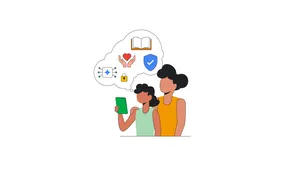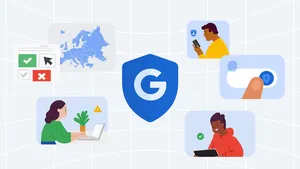A policy framework to protect children and teens online
Today’s children and teens are growing up in an increasingly digital world. We take seriously our responsibility to promote positive online experiences, and we support regulatory approaches that promote both online safety and balanced practices.
That’s why today we’re releasing our Legislative Framework to Protect Children and Teens Online. The Framework outlines some principles for laws seeking to improve online experiences and keep children and teens safer when using the internet. We hope that sharing our experiences and perspectives will advance the work of the policymakers and experts addressing these issues, and we look forward to engaging constructively with them.
Improving protections for families
Online services need to deliver age-appropriate features and services and be designed with safety in mind. Google is continually working on industry-leading protections — whether expanding options for parents in Family Link on YouTube, not personalizing advertising to children and teens, blurring adult or graphic violent content in Search results by default, or setting defaults that support digital wellbeing. And we are committed to evolving our practices and approaches with input from diverse stakeholders. In fact, just today YouTube announced five principles that are core to its work to create a better environment for young people.
We agree with public health and mental health experts that technology companies have a responsibility to design and build better online experiences. We are encouraged by the increased global interest in ensuring that online services address risks to children and teens.
Good legislative models — like those based on age-appropriate design principles — can help hold companies responsible for promoting safety and privacy, while enabling access to richer experiences for children and teens.
Of course, as policymakers contemplate these issues, they should carefully consider the broader impacts of these bills and avoid side effects like blocking access to critical services, requiring people (including adults) to submit unnecessary identification or sensitive personal information, or treating an older teen the same as a younger child. Child safety and privacy groups have similarly stressed the importance of getting this right.
Working together toward a strong, consistent standard
The work ahead is both complex and important. Reaching the right answers for children and teens will depend on collaboration and support among a diverse set of organizations. We hope that today’s Framework contributes to global conversations about building consistent and strong standards, while accounting for unique views of different societies on how best to protect their young people.
Working together, we’re confident we can deliver on the promise of a safe and enriching digital world for our children.






